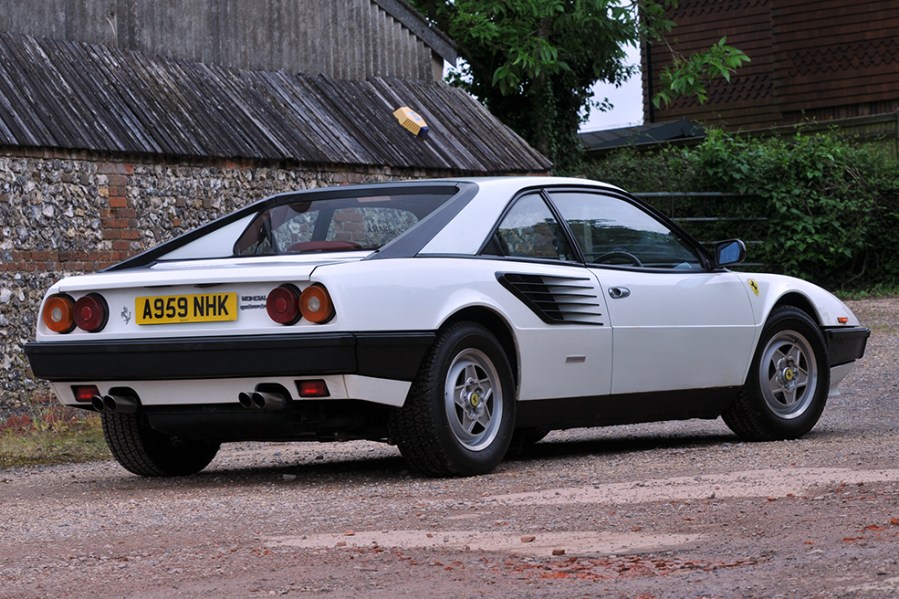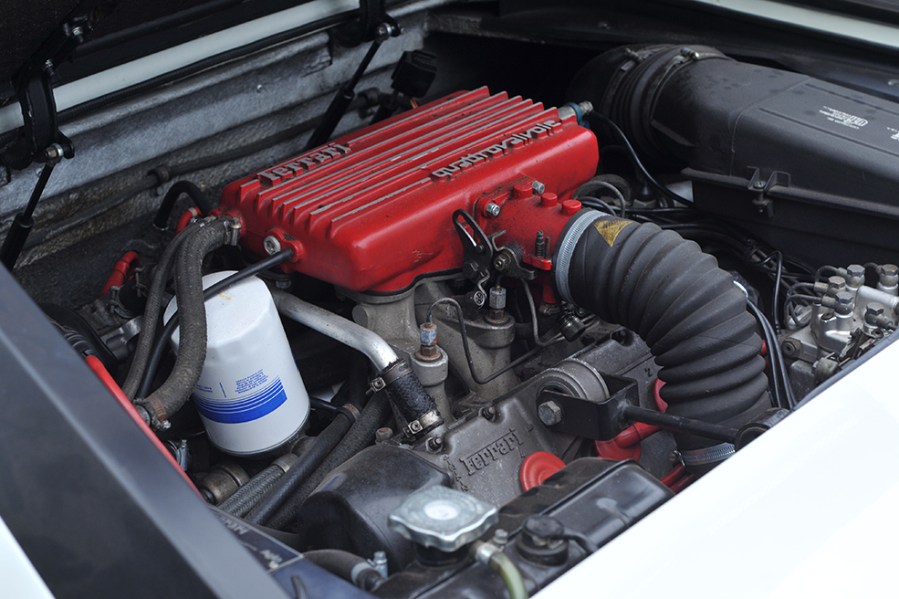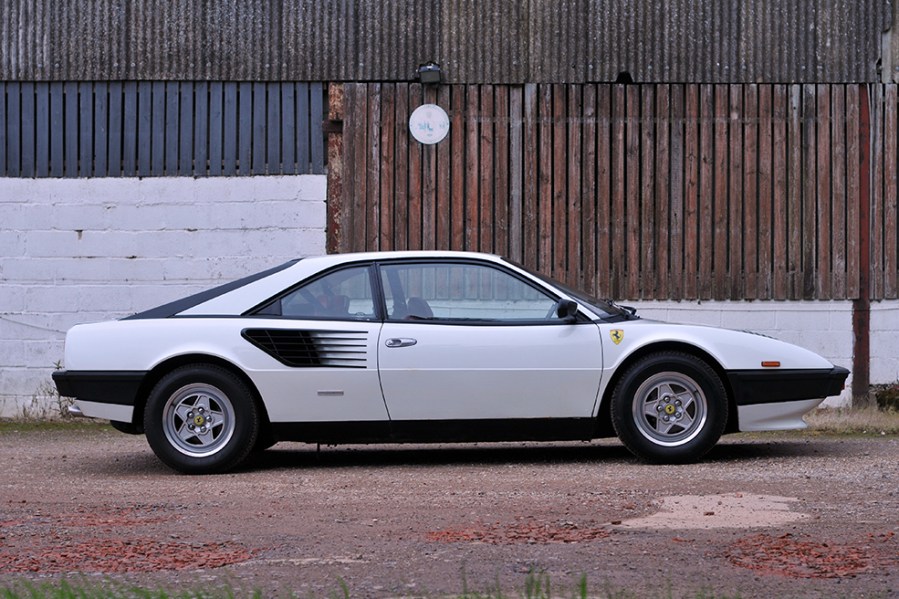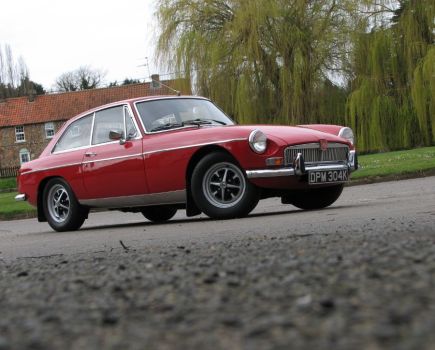The Ferrari Mondial is still the entry point to Prancing Horse ownership and despite a mixed reputation, it’s a fine choice
Words: Chris Randall Images: Paul Wager
Replacing the 308 GT4, the Pininfarina-styled Ferrari Mondial delivered supercar looks with four-seater practicality and could be had in coupe and, from 1983, Cabriolet forms. It first arrived in 1980 as the Mondial 8 with a 214bhp V8 and slightly underwhelming outright performance, but this improved with 1982’s QV with 240bhp.
During a production run that lasted to 1993 there were many changes, including a 3.2 model to replace the QV and the 3.4t that boasted 300bhp, a more Ferrari-like 0-60mph time of 5.4 seconds and a new longitudinal engine layout. This latter model got power-assisted steering and electronically-adjustable dampers, making it the pick of the bunch for many enthusiasts.
As for what 1980s buyers might have considered instead, four-seater rivals weren’t that numerous, but an argument could certainly be made for the likes of the Porsche 928 or 911, Jaguar XJ-S and Aston Martin V8. All offered ample performance with a modicum of extra cabin space over a strict two-seater. Just over 6000 Ferrari Mondial examples were made in total, and while for years it suffered from ‘it’s not a proper Ferrari’ attitudes, things have changed with more enthusiasts realising just what a savvy buy a good example can be.

Bodywork
Like any car of this ilk, the cost of major bodywork surgery on a Ferrari Mondial will be eye-watering, so you’d want to tread extremely carefully before considering a restoration project. At least the steel body isn’t prone to deeper-rooted structural corrosion, so the main checks can be focused in areas such as the front and rear wheelarches, the sills, door bottoms, and the bottom of the front wings and A-pillars.
You should also examine the joint between the roof and rear buttresses as rust can fester here. The floor sections were GRP, so no rot to worry about, while the 8 and QV featured aluminium boot and engine lids; check them for damage and dents. It’s important to be diligent with your inspection as replacement panels are hard to source, which means repairs will likely involve specialist fabrication at significant cost.
Be on the lookout for any evidence of previous repair work; it may not have been done to the standard you’d expect, so get a specialist to check if you’ve any doubts.
Other issues to watch for include pop-up headlamps that don’t and a sunroof that’s become jammed due to seized cables or broken/worn gears. It’s a real hassle to fix and you could easily spend a four-figure sum if a complete strip-down is required, so a previous owner may simply not have bothered.
On Cabriolet models it’s important to not only check the condition of the hood itself and the rear window (which turns milky) but also the operating mechanism; locking catches were quite fragile so be sure they are working correctly.

Engine and transmission
The first point to make is that a Ferrari Mondial can’t be run on a shoestring and big bills await the unwary, so unless you see evidence of meticulous maintenance, be prepared to walk away. That caveat dealt with, the better news is that a wealth of specialists means looking after one needn’t be a chore and you can expect QV models onwards to cover 150,000 miles before a rebuild is due.
Oil leaks from the likes of the camshaft seals and cam cover gaskets aren’t uncommon, and you’ll want to be certain there’s no exhaust smoke or signs of overheating. Indeed, the cooling system should receive close scrutiny with examination of the front-mounted radiator, the pipes and hoses that run back to the engine and the condition of the expansion tank which is prone to corrosion; a new one of those is £350-£400.
Servicing is required every 6000 miles or annually at a cost of around £600, with the larger 18,000-mile service nearer £950, and you’ll also need to budget for a fresh cam belt at 30,000 miles/3 years. That crucial job can be done with the engine in-situ on earlier cars – at £500-£600 –
but that’s not the case with the 3.4t’s motor where the same job can nudge £2000. Original exhausts were prone to rot, so don’t be surprised if it’s been replaced with an aftermarket system. And use the road test to check for poor running caused by fuel-injection or ignition system maladies; diagnosing engine management faults can be a time-consuming, and therefore expensive, affair.
Transmission-wise, the 3.4t was offered with a Valeo semi-automatic unit but this is rare and not terribly reliable, so we’d avoid that one. The ZF 5-speed manual is much better although you’ll want to check for unpleasant noises and jumping out of gear. The shift itself can be a bit obstructive when cold but it should improve as the oil warms through, so be wary if it doesn’t. You can expect 30,000-40,000 miles from the clutch but it’ll cost four figures to replace, although it’s a slightly quicker job on the 3.4 thanks to the gearbox location.

Suspension, steering and brakes
The Ferrari Mondial’s double wishbone suspension was pretty much what you’d have expected to find on a car like this, and it’s a straightforward set-up that, if maintained properly, won’t give any problems. The trouble starts if a car’s been neglected, in which case the job of refreshing all of the bushes and replacing dampers and springs is going to leave a hefty hole in your bank account. Budget anything from £5000 to £10,000 once parts and labour have been factored-in.
It’s a good idea to establish how healthy things are, and haggle accordingly if a major overhaul is on the cards. It’s also worth noting that 3.4t models were fitted with electronically-controlled dampers that gave the driver the choice of three different settings, and there should be a warning light that needs to be checked to ensure it illuminates and extinguishes correctly. You’re looking at the thick end of £2000 if all four dampers need a rebuild, and bear in mind that Ferrari charges around £1300 apiece for the electronic actuators.
There are no real brake issues to worry about, other than the usual need to inspect them for wear – replacing discs and pads at both ends will set you back around £1500 – but make sure that the ABS system (standard from 1988) operates as it should.
As for the steering, it’s heavy on non-assisted cars but should lighten up nicely on the move and feel accurate. PAS certainly takes the sting out of low-speed manoeuvres and apart from a check for fluid leaks and corroded pipework it’s a reliable system. The only other thing to mention here is the matter of wheels and tyres; early Mondials were fitted with metric rims which made replacement rubber more costly – £300-£400 per corner. Don’t be surprised to find that a previous owner has replaced them with imperial items, with 348 wheels one option.

Interior, trim and electrics
The leather-clad cabin feels luxurious and it’s a matter of checking seats for signs of bolster wear and damage. A trimmer can tackle small repairs but complete renovation will run into thousands so be wary of anything too shabby. It’s also worth checking the dashboard and other plastics for warping and damage.
However, it’s the electrics that need closer inspection as the Ferrari Mondial isn’t entirely trouble-free in this department. The biggest problem concerns the fuse box that can suffer from melting circuit boards, and Ferrari lists a complete new assembly at almost £9000! Specialists in the US offer cheaper replacements, but we’d discuss issues with a specialist before deciding on the best course of action. The important thing is ensuring that everything works, so don’t be satisfied until you’ve tried every switch.
Slow electric windows are a common bugbear – made worse by lack of use – but there are ways of improving operation. For example, specialists, Superformance sells a 12v switch module for £60 that’s worth trying. And one other area worth focusing on is the air-conditioning. It needs upgrading for R134a refrigerant and that’s costly, so a previous owner may simply have given up if the system stopped working.

Our verdict
The Mondial has been much-maligned over the years, with plenty of bar-room experts dismissing it as not being a ‘proper’ Ferrari. Quite frankly that’s nonsense, and anyone who has tried one will realise that the sharp handling and singing V8 engine provide all the entertainment you’d expect of a car from Maranello. That the addition of rear seats adds extra usability should be considered a bonus, although it’s not necessarily a Ferrari for all the family; things are still pretty cramped back there.
As an ownership proposition, there’s no escaping the fact that repair costs are going to be very high – although it’s no different from any other exotic in that respect – and buying one that’s been neglected would be a leap of faith that you’d need to be very brave to take. The sensible course of action is taking the time to find a Mondial that’s been cherished, and we’d certainly recommend buying from a reputable specialist. There are plenty of those around, though, so as long as you set aside a sensible annual maintenance budget you should be able to enjoy everything this supercar has to offer without fear of financial meltdown.
Anything with a price tag of between £10,000 and £15,000 is going to be in parts car or project territory, and you’ll need to be looking in the region of £17,000-23,000 to secure a Mondial that’s likely to have a high mileage or be in need of a little TLC. Stretch the budget to £25,000-35,000 and you’re looking at good to excellent examples of all models and spending £40,000 or more takes you into the territory of the very best out there, unless you want a 3, which can top £50,000.
If you prefer a Cabriolet then add £3000-£5000 depending on model and condition. The 1990 car pictured here from Oliver Hamson is something of a unicorn, being a 3.4t manual Cabriolet (one of only 51 RHD examples) made, and has only covered 12,960 miles. At £69,995 its not cheap, but it’s surely one of the best Mondials in existence.
Despite increased appreciation of these Ferraris values have been fairly stable over the last few years and there’s no reason to think that’ll change in the future. Find a good one and look after it properly, and it’s a safe place to put your money.

Ferrari Mondial timeline
1980
The Mondial 8 is launched in coupe form and with a 214bhp V8. Styled by Pininfarina, it looked the part but not everyone was impressed with the performance.
1982
Ferrari addressed concerns over power and performance by giving the V8 four-valve cylinder heads – the QV now makes 240bhp. The Cabriolet arrived in 1983.
1985
The QV is replaced by the 3.2 model that gets 270bhp along with a mildly-revised exterior, including body colour bumpers, and an improved cabin. ABS brakes become optional.
1989
3.2 production ends and it’s replaced by the 300bhp 3.4t which now features a longitudinally-mounted engine.
1993
Production of the Ferrari Mondial ends with more than 6000 made.





















